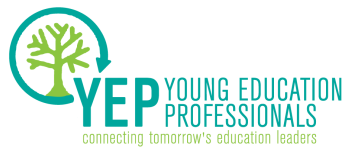Check My School, which launched in 2011, is a program designed to get communities involved in monitoring schools. Because there are 44,000 schools, keeping school data up to date is no easy feat. Designed by the anti-corruption nonprofit Affiliated Network for Social Accountability in East Asia and the Pacific (ANSA-EAP), Check My School’s ultimate aim is to improve public schools through the collection and dissemination of data, two important themes close to our hearts here in the United States.
Check My School representatives train community volunteers to help collect and track data that are difficult for the government to keep tabs on. Volunteers then go to local schools and painstakingly check all the facts: counting books, classrooms, students, teachers, and toilets. (You can see a volunteer in action here.) The results are fed back to the government and published on the Check My School website. Beyond providing the data publicly, this service also allows the government to update its data for free and to target interventions accordingly.
“When we first set out, our main aim was to map and synchronize data,” Dondon Parafina, executive director of ANSA-EAP and the mastermind behind Check My School, told me. “As the project evolved we found that our stakeholders wanted to know what they could do with the information, how it could be used to drive change, so we introduced an issue resolution component.” Once problems or faulty structures are identified, the government addresses them. Evaluations of Check My School show that some problems that have gone unsolved for years, including a lack of toilets in several schools, have now been fixed.
“We also thought that the stakeholders who would be most involved in providing feedback would be students and parents. We thought that as government employees, teachers might experience a conflict of interest in providing feedback,” Parafina added. “In fact what we have seen is that teachers have been very active in providing feedback. As tax-paying citizens they have a right to care and be involved.”
Check My School has been so successful that they received 18 requests for replications last year. ASNA-EAP has already begun assisting Indonesia in setting up a similar system, and there are pending proposals for cross-country learning programs with Mongolia and Cambodia. The initiative has also inspired similarly named spin-off projects in Colombia and Mexico. Parafina has been pleasantly surprised by the interest other countries have shown in Check My School, but he warns: “Initiatives cannot simply be exported. They must be adapted to the local context.”
I spoke to Parafina before Typhoon Haiyun struck. In the weeks since our conversation, many schools in the Philippines find themselves facing large challenges. Some have been obliterated, and those still standing will face an influx of transferees leading to higher student-teacher ratios, overcrowded classrooms, and increased pressure on scarce facilities and resources. Amidst the post-typhoon pressures on the Philippines’ education system, Check My School offers hope. Its success shows that despite limited resources, Filipino communities have successfully pulled together to prioritize and improve local schools. It has set a precedent. For the regions affected by Typhoon Haiyun, the road to reconstruction will be long. Perhaps the knowledge and enthusiasm generated though Check My School’s partnership with the government will help make that road a little more manageable.
ANSA-EAP is collecting donations to provide relief to people displaced by Haiyun. You can track their progress by following #reviveph or the revivePH Facebook page. To donate follow the instructions here.
Wenna Price is an independent education consultant with a background in teaching, teacher training, and curriculum design. Reach her via Twitter.

 RSS Feed
RSS Feed